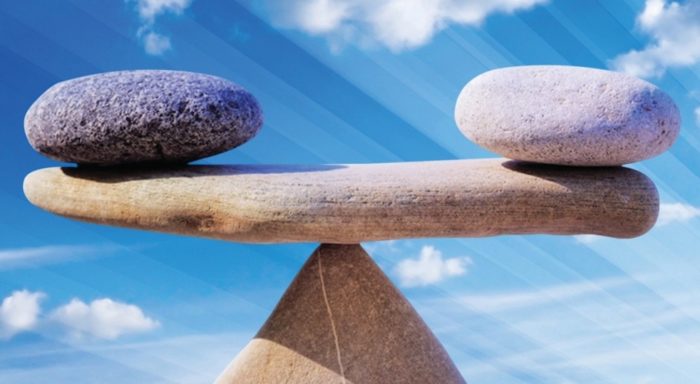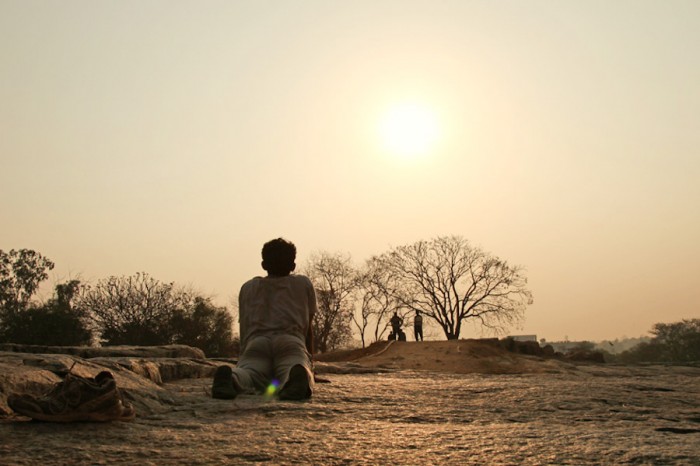
Yoga teaches that we are all divine.
The Sanskrit word, yoga, translates to “union” or “yoke.” This union is about bringing different aspects of ourselves together (body, mind and spirit) as well as yoking our human self with our divine self.
Yoga philosophy says there is a uniting force that is inherent in all of us beyond the identities of race, ability, gender, class, sexuality, and religion. And there’s a drive I’ve seen in mainstream white yoga culture to attempt to discount identities in order to get to that universal divinity.
My yoga practice encourages me to lean into our inherent sameness more than dig into our uniqueness. But as my consciousness of race, white privilege and white supremacy grew reading Shelly Tochluk’s first book, Witnessing Whiteness, as well as looking at ways I was causing unintentional harm in my teaching and personal life, I felt betrayed by my spirituality. I felt the sentiment of oneness was an act of denial and ignorance.
“What harm is done when white people focus on spiritual development, but lack an awareness regarding underlying racial dynamics?”
So when I found out Tochluk was writing another book about the intersections between social justice and spirituality, Living in the Tension, I could not contain my excitement. In the book Tochluk writes:
“It is important to ask, what harm is done when white people focus on spiritual development, but lack an awareness regarding underlying racial dynamics? Does the consistent perpetuation of unintended harm upon others (due to a lack of awareness of race) detract from the ability to claim a high level of spiritual insight? As I believe the answer is yes, it is important to consider how a transformative, psychological healing process via a spiritual practice might require the development of a racial justice practice, and vice versa.”
The both/and approach
As a white Yoga practitioner and teacher I have struggled with many of the tensions that Tochluk addresses in this book: transcendence and grounded-ness, appropriation and belonging, colorblind ideology and the reality that race affects people’s experiences in this country.
“The both/and approach is encouraged by an expanding group of people who appreciate that life presents us with many ‘interdependent opposites’ to navigate,” Tochluck writes. “The term ‘interdependent opposites’ refers to a set (or pair) of aspects of our lives that are each essential, and yet provide paradoxical tension because each has different requirements.”
This “both/and” approach to the book is a beautiful way to hold the possibility of moving through the world from a centered place as well as from a place of increased consciousness, awareness and action.
If I only focus on the parts that unite us when I teach a yoga class, I am denying the parts that are unique. I bring the privileges and traumas my body and mind experience individually and systemically — along with the inherent, universal divinity that connects me to all other beings — to every class I teach.
Living in the Tension helped me move towards healing this either/or mentality to hold the multiple truths.
In fact, this book deepened my yoga practice by increasing my consciousness of “oneness” as well as diversity and uniqueness.
“I think the book is very powerful, even though it was a voice of a white person, and it has come into my yoga practice,” says Alyssa Pizarro, a Latina yoga instructor in Seattle, who drawn to the book after deciding she wanted to have more conversations and involvement around issues of social and racial justice.
“It is easy to create a bubble and pretend that everyone is in a space where ignorance is bliss, but that is just giving people a pass. I can ask people to do a little more work. Maybe not directly, but in my interactions, the way that I teach and through practice,” Pizarro says.

Ancestral memory in the physical body
Looking into my whiteness, and race in general, is a way to bring wholeness to a part of myself that has largely been in the shadows. Living in the Tension does not just include the analytical and intellectual, but also how to incorporate the spiritual and physical.
“The physical body is a vessel for the movements of spirit and soul, and the physical body carries historical and ancestral memory,” Tochluk explains.
As I hold space for the physical body in Yoga classes how can I hold these two truths? I know that each body has a different level of flexibility and strength, but what about how each body holds historical and ancestral memory?
Tochluk extends the idea of awareness beyond our own bodies and minds into awareness of relationships, society and systems at large. She offers tools to remain present during difficult conversations and offers those interested in racial justice within a spiritual context expanded ways to approach their work.
“A spiritual definition suggests accountability starts with a heart connection, then moves to the head,” she writes.
This is a book about uniting the heart with the head, the body with the spirit, our differences with our sameness and trauma with liberation. It attempts to hold all of these at the same time.
I am grateful for this book, and I hope it will be utilized in both spiritual and activist circles for years to come.
Shelly Tochluk will be discussing her book “Living in the Tension” the evening of Wednesday, June 29 from 7-9pm at Tiger Lily Yoga on Rainier Ave. Details here.


Thank you for this very thoughtful exploration of a rather difficult and mostly ignored topic. I just want to add food for thought: the awareness of oneness requires at least a gradual breakthrough to our uniqueness. Oneness expressed itself through uniqueness in the manifested world. No 2 people are the same even among 7 billion people! I feel into that a lot and when I do I have eyes that only see uniqueness… eyes that become color blind.
In other words: uniqueness is the expression of oneness in the relative world of time and space.